|
| | | | | | | |
|
| | |
| Émile
Baudot | |
| | Magneux
(HAUTE MARNE) 11
September 1845 -Sceaux
28 March 1903 | |
|
|
|
|
|
| Biographical
notes by :
IW2GJQ |
|
|
|
|
|
|
| Technical
French, son of a farmer, Baudot attended
only primary and spent adolescence and youth working in father's
farm. After
his entrance as a
substitute, in the lines Telegraphic (16 July 1870), fascinated by the
scientific aspects of his new profession, Baudot devoted himself to
perfecting his education, in the short time leave he free from work
at the central Post Paris.
In 1870
he invented his telegraphic code, the first truly digital, based on two
states, both logical ( "1" and "0", units that now call "bit") and
physical (power = "1", no current Electrical = "0"). Each
character Baudot consists of 5-bit and therefore are available 32
different combinations, which are not enough alone to represent the 26
letters of the Latin, the 10 digits and punctuation. Using two
special characters, and LTRS FIGS you will get 64
opportunities. LTRS
(11111) above alphabetic characters, FIGS (11011) those numbers and
those special, as punctuation. The
natural evolution of the Baudot code were the ASCII codes to 7 and 8
bits that form the basis of the language of today's
computers. Before
the mid-20 th century, the Baudot code supplanted the Morse as the most
used telegraphic alphabet. In fact, its combination of 5 units
of equal duration represents a substantial savings to the system Morse
of dots and lines. The Baudot code was known as the International Code
Telegraphic N. 1
On
17 June 1874 Baudot patented his first apparatus (patent No 103898,
"Quick telegraphy system"), which today would call "system division
multiplex time. His
invention took cue from the printing system a tool Hughes and a
distributor invented by Bernard Meyer in 1871 (the 5-bit code was
originally conceived by Gauss and Weber). Baudot combined
these elements, along with its original ideas, to produce the final
multiplex system. 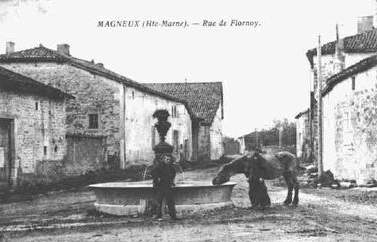 Baudot The system was composed of
three main
elements: the keyboard, the distributor and printer paper tape.
The keyboard resembling that of a piano and had 5 keys, divided into a
group of two buttons, left, and a three, right.
The distributor was the heart of the system and connected to it were
both receivers and keyboards. Each keyboard was connected to
a set of Rotors that opened and closed contacts on the conductive
elements fixed called segments. The brushes rotated thanks to
an electric motor or a mechanism weights. Typically, a
distributor had from four to six keyboards connected, each with its own
set of brushes and buckets.
The receiver was equipped with
5 electro calamity that remembered the received signal and
which was
automatically decoded the combination to print the resulting directly
on a strip of paper.
Since distributor
were connected to four or more keyboards, and the distributor of
departure and arrival were connected by a single line, this system was
the first multiplex success in telecommunications electricity. Baudot The system was composed of
three main
elements: the keyboard, the distributor and printer paper tape.
The keyboard resembling that of a piano and had 5 keys, divided into a
group of two buttons, left, and a three, right.
The distributor was the heart of the system and connected to it were
both receivers and keyboards. Each keyboard was connected to
a set of Rotors that opened and closed contacts on the conductive
elements fixed called segments. The brushes rotated thanks to
an electric motor or a mechanism weights. Typically, a
distributor had from four to six keyboards connected, each with its own
set of brushes and buckets.
The receiver was equipped with
5 electro calamity that remembered the received signal and
which was
automatically decoded the combination to print the resulting directly
on a strip of paper.
Since distributor
were connected to four or more keyboards, and the distributor of
departure and arrival were connected by a single line, this system was
the first multiplex success in telecommunications electricity.
|
| 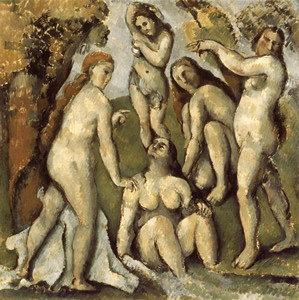
|
| The
system worked like this:
Operator
digit code on the keyboard connected to the distributor, who blocked
the keys until the Rotors not passed over segments connected to the
keyboard. The keyboard then unblocked, issuing an audible
warning signal for the operator, and was ready to receive the next
character. This sound was known as signal cadence. The two
distributors of departure and arrival were synchronized with each
other. The
receiver, on the other end, the message directly printed on a strip of
paper.
Working with the keyboard Baudot required a lot of skill, because the
typing had to be absolutely regular and rhythmic. The normal
operating speed was 180 letters per minute. Baudot
The system was accepted by the French in 1875 and the first test in
line occurred on November 12, 1877, between Paris and
Bordeaux. By
the end of that year started a double Baudot telegraphic service on the
line Paris-Rome, about 1700 km long. On
27 April 1894 established Baudot, always on a single line,
communication between the stock exchange in Paris and Milan and,
simultaneously, between the center of Milan and in Paris.
After
France, the system telegraphic Baudot entered service in other nations:
the first for Italy (1887, for the service inside), then the
Netherlands (1895), Switzerland (1896), Austria and Brazil (1897), the
United Kingdom (1898, there was the first since a simple tour of the
British Post Office between London and Paris), Germany (1900), Russia
(1904), India (1905), Spain (1906 ), Belgium (1909), Argentina (1912)
and Romania (1913). |
| 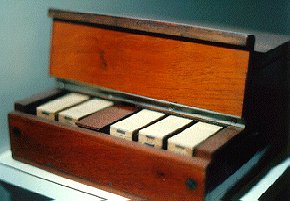
| | |
Clavier
Baudot
| |
| 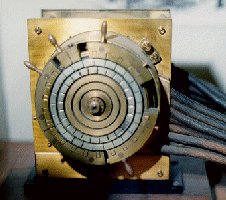
| | |
Distributer
Baudot
| |
| 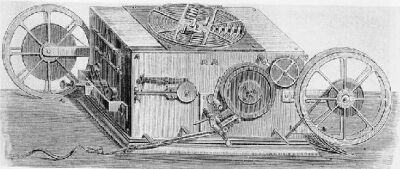
| | |
Print
Baudot
|
|
| The
equipment were installed Baudot to Exposition universal Paris in 1878
and won him the great gold medal, in addition to unanimous
congratulations engineers from all over the world. Sell
this medal in 1880 to further research in the field of telegraphy, as
always received a little help Telegraphic by the French and very often
had to put their pocket money to finance his experiments.
Baudot died at the age of fifty-seven, after a long illness.
The
inventor was awarded the Legion of Honor in 1879 and promoted
controller in 1880 and in 1882 was appointed Engineer finally
inspection. |
|
|
| The
speed unit in the telegraph transmissions is
called Baud in his honor. The Baud was the main unit of
measurement data transmissions before being replaced by more accurate
bps. By:IW2GJQ
|
|
|
|
|
| | |
